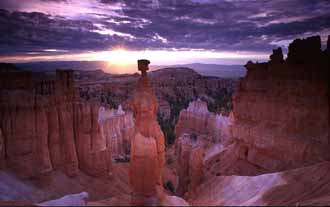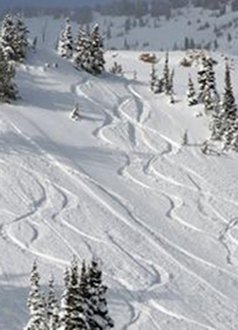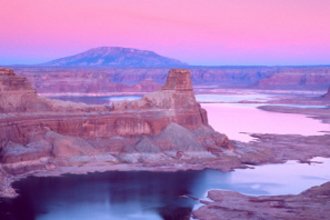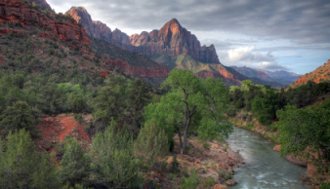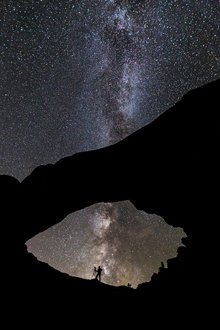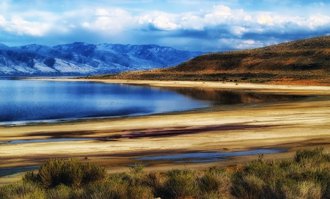That You Were Never The Same?
Golden Spike
National Historic Park
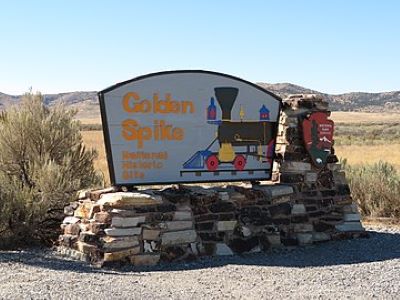
History Was Made Here
The Golden Spike National Historic Park is located north of the Great Salt Lake at Promontory Summit in Utah. It commemorates a truly historic event. On May 10, 1869, a telegraphic message flashed across the country. “The last rail is laid, the last spike driven, the Pacific Railroad is completed.” The telegraph announced the completion of the first Transcontinental Railroad.
Two railroad companies … the Central Pacific laying rail eastward from Sacramento and the Union Pacific laying rail west from Omaha … had just met at this spot. Transcontinental transportation was now a reality. The Central Pacific, using mainly Chinese labor, set a record in railroad history. This railroad transformed the economic and social landscape of the United States.
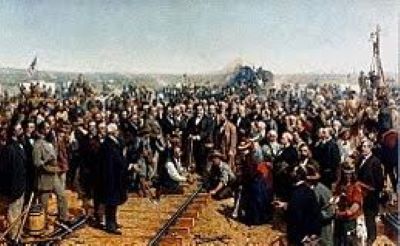
The Ceremonial Spikes
The completion of the railroad was marked by the driving of four ceremonial spikes. Two of them were gold. The most renowned of these is the "Golden Spike," a 17.6-carat gold spike donated by David Hewes, a friend of Central Pacific President Leland Stanford. Engraved with the words "The Last Spike," it symbolically represented the unification of a vast nation.
Due to the inherent softness of the metal, the golden spike was gently tapped into a pre-drilled hole and then promptly removed after the ceremony to prevent damage. Today, the original Golden Spike resides at the Cantor Arts Center at Stanford University. Why it is there I have no idea.
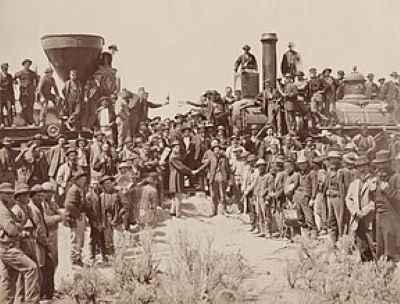
The Race to Promontory
The construction of the Transcontinental Railroad was a massive endeavor. It highlighted an intense and often deadly competition between the Central Pacific and Union Pacific Railroads. Each company raced to lay as much track as possible. They were driven by government incentives that awarded land and funds based on how many miles of rail were laid.
The Central Pacific, employing a vast workforce of Chinese laborers, achieved a remarkable feat by laying ten miles of track in a single day. That record still stands although with an untold toll on human lives and misery. This fierce rivalry culminated at Promontory Summit where the two lines were ceremoniously joined.
Visiting the Park
Today, visitors to Golden Spike National Historical Park can relive this rich history in several ways:
- Replica Locomotives: From May through September, the park showcases working replicas of the two iconic 1860s steam locomotives - Central Pacific's "Jupiter" and Union Pacific's No. 119. These meticulously crafted engines operate daily offering visitors a realistic connection to the past.
- Reenactments: The park hosts reenactments of the "Last Spike" ceremony on Saturdays and holidays from May 10th through September. Also, during the Winter Steam Festival on the last weekend in December, visitors can witness special programs that bring history to life.
- Auto Tours: Two self-guided auto tours … the West Grade Auto Tour and the East Grade Auto Tour … allow visitors to drive the original railroad grades. These tours offer some insight into the monumental efforts required to build this railroad through the west’s rugged terrain.
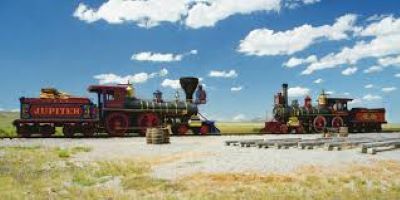
Visitor Information
When planning a visit, make sure you consider the park's location and operating hours:
- Location: The park sits in a remote location 32 miles west of Brigham City, Utah. It is way out there and is accessible via State Highways 13 and 83.
- Operating Hours: The Visitor Center is open daily from 9:00 a.m. to 5:00 p.m. However, it is advisable to check the official National Park Service website for any seasonal variations or closures.
Seasonal Considerations
Utah's climate can be unpredictable so visitors should prepare accordingly:
- Summer: Expect hot and dry conditions with temperatures often soaring well above 90º F (32-35°C).
- Winter: Temperatures can drop below freezing and snow is common.
- Spring and Fall: These seasons offer milder temperatures but can still be unpredictable.
Dress in layers, wear sturdy walking shoes and carry insect repellent. You want to be able to add layers or remove them depending on the current conditions. Bringing water and snacks is also a necessity as amenities in the vicinity are limited.
Nearby Attractions
If you want to make an entire day trip out of it, some people advise to combine it with visits to several nearby attractions:
- Antelope Island State Park: Located within the Great Salt Lake, this park offers wildlife viewing, hiking, and stunning vistas.
- Bear River Migratory Bird Refuge: A haven for bird enthusiasts, this refuge hosts millions of migratory birds annually.
- Hill Aerospace Museum: Situated near Hill Air Force Base, the museum showcases an extensive collection of military aircraft and artifacts.
In my opinion, I would do these one at a time. Their relative proximity doesn’t mean it’s easy to combine them. Each one of them is a full excursion on its own.
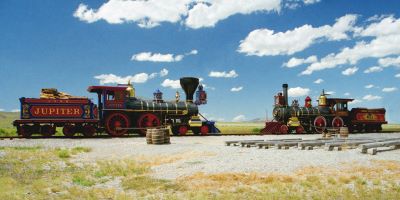
I’ve Been Working On The Railroad
While writing this article, the song "I've Been Working on the Railroad" popped into my head. A little research shows that it likely originated in the United States in the late 19th century. It is believed to have been a popular folk song among railroad workers before it became widely known through students' songbooks in the 1920s.
The song's widespread popularity in college settings helped it become a familiar tune in American musical folklore. The song captures the daily life and hardships of the railroad workers from the exact era we’ve been talking about here.
Preserving History
The significance of Promontory Summit extends beyond the completion of the railroad. The site symbolizes the dogged spirit of innovation and collaboration … and sacrifice … that propelled the United States into a new era of connectivity and progress. No accurate numbers are available but the number of people who died building this railroad may have exceeded 1,000. That is at least according to some estimates.
Visiting Golden Spike National Historical Park allows you to step back in time to a game-changing period of history. It also helps contribute to the preservation of accomplishments like this that shaped this nation. Some people these days are trying to erase historic sites like this.
Richard Chamberlain starred in an enthralling mini-series … way back in 1986 … about the explorer Richard C. Fremont. It told so much about the history of this area and the first people to explore it.
Conclusion
The Golden Spike National Historical Park stands as a monument to human ingenuity, determination and the never-ending “quest for progress.” Whether you're a history enthusiast, a railroad buff, or just a curious traveler, the park offers a little bit of insight into one of this nation’s defining moments. It forever altered the American landscape.
Have A Comment or Story
About This Topic?
Do you have a comment or story about this article? Share it!


